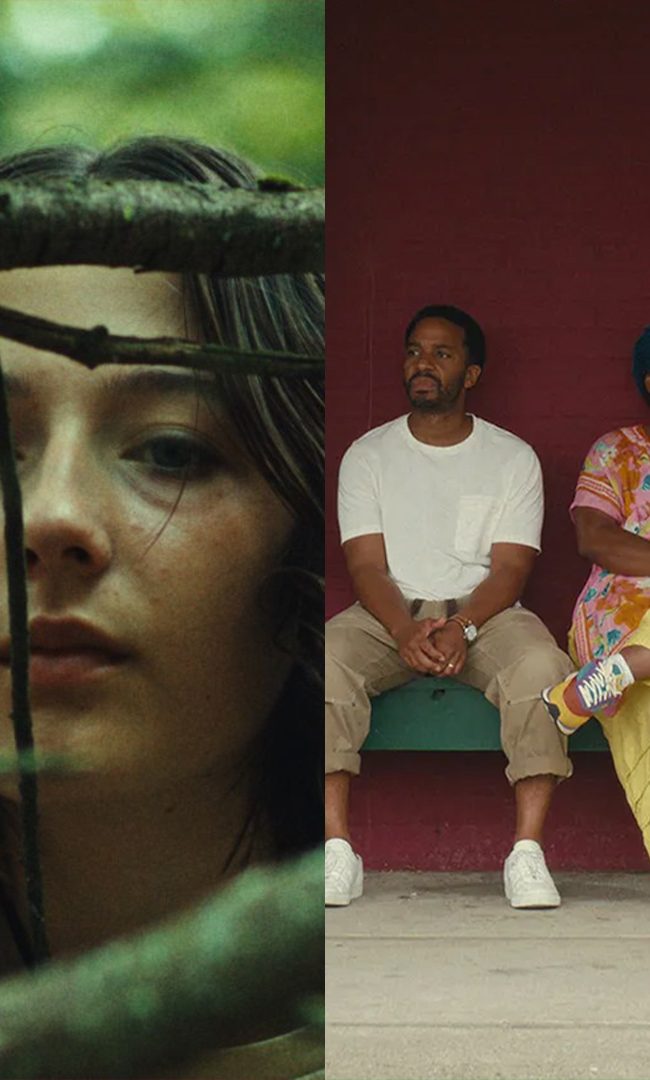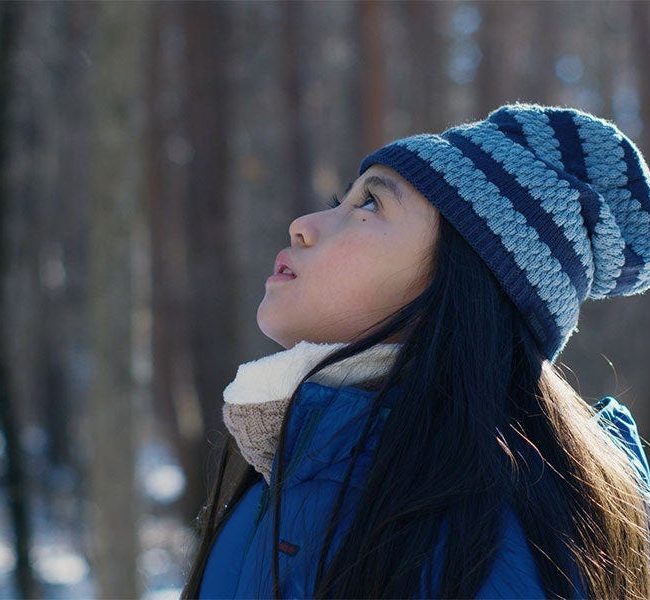Interview: A Conversation With Kelly Reichardt
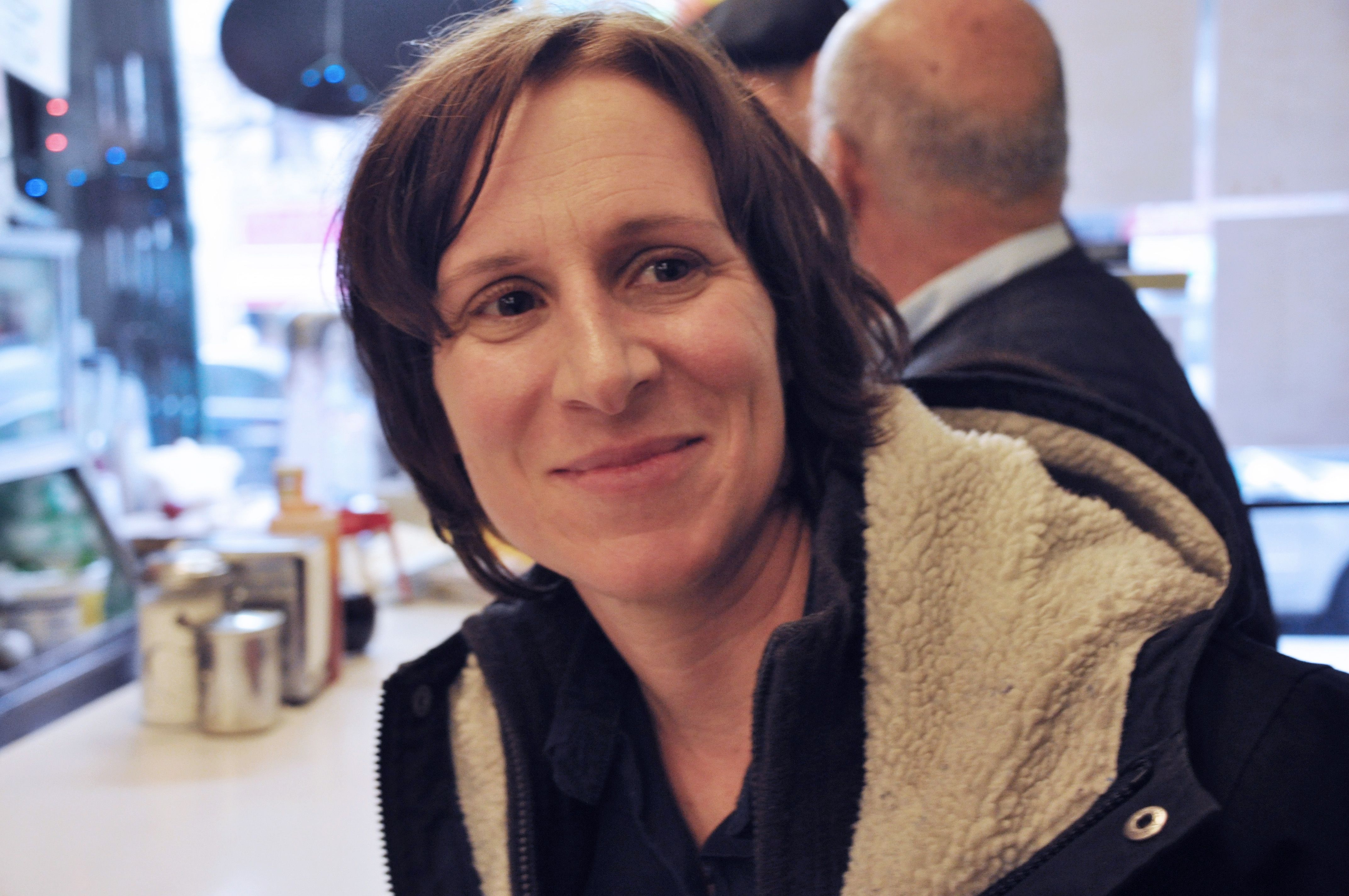
I recently spoke with director Kelly Reichardt by phone about her new film First Cow, which premiered at the 2019 Telluride Film Festival (our Matt Delman reviewed it following the subsequent New York Film Festival) and is now finally rolling out in theaters. The film is a deceptively quiet period piece (passionate emotions roiling just below the surface), based on Jonathan Raymond’s The Half Life, set in the Pacific Northwest of the early 19th century, where white fur trappers, non-European immigrants and Native Americans co-exist in uneasy quasi-harmony. John Magaro (Overlord) plays a shy, awkward cook – nicknamed “Cookie” – who befriends King Lu, an entrepreneurial Chinese jack-of-all-trades played by Orion Lee (MLE). They bond over their status as social outcasts and together hatch a plan to earn money through Cookie’s considerable culinary skills. The only problem is that the only source of milk in the region is a cow that is not theirs. Using her trademark gentle pace and meticulous attention to visual detail, Reichardt (Certain Women) weaves a beautiful tale of the risks and rewards of brotherly love. Here is a condensed digest of our conversation, edited for length and clarity.
Hammer to Nail: Let’s start with the genesis of the story.
Kelly Reichardt: The genesis was Jonathan Raymond’s first novel, The Half Life, which I believe I read in 2004. The novel weaves together two stories between 1980 and 1820 and involves Cookie, and the King Lu character is actually two characters that were kind of fused together in our script, but it was just kind of a giant…it’s not a film I could undertake. And so I wrote to Jon Raymond after finishing the novel and asked him if he had any short stories, which led to him sending me Old Joy. And that was the first film I made based on one of his stories.
And then over the last however many years it’s been, we’ve sort of come back to this idea of The Half Life, just always pondering how we could get our arms around it for a film, something that I could expand upon as opposed to just extract the novel. We came up with this cow idea – the cow’s not in the book – and that kind of gave us a vehicle to keep Jon’s characters and the themes of the book and bring them to this other story. And it was just in the mode of where I could get in and sort of expand and get into the minutiae and details of the story as opposed to covering the bigger points of four decades.
HtN: Sure. And then of course you have that opening scene that sort of keeps some of that original idea of 1980.
KR: Yeah, that was a nice way to introduce the Columbia River, which is where the whole film takes place, and show the present day of this barge going down the Columbia, because it’s the same river that the cow comes down and was a real way…it’s like a trading highway for the Multnomah tribe and I think many of the tribes that lived along the Columbia River.
HtN: So, you’ve made two period pieces – this and Meek’s Cutoff – and then your other films are set in contemporary times. Do you nevertheless see any thematic resonances between this film and your previous work, things that you continue to explore in film after film?
KR: Yes, and a lot of these things are seeded in Jon’s writing, themes of just questioning how capitalism works with the natural world and is it possible for those two things to co-exist. There are also questions of American mythology, based on if anybody can make it in America, you just need an idea and some tenacity and you can just pull yourself up from your bootstraps and make your way, and is that really all it takes? And I guess also there’s resonance with a film like Wendy and Lucy, with the stealing of the dog food; in this film, there are these guys that are stealing a basket of milk, which is like the big crime in the film, as opposed to seeing the legitimate beaver trade, that’s going to wipe out the beaver and wipe out the indigenous people who’ve lived there forever, as the real crime. So, it looks at those sort of power structures and ideas of justice, but also friendship, which has been a theme in a lot of my films, as well.
HtN: Definitely. Why, by the way, in this film and in Meek’s Cutoff – your two period pieces – are you drawn to the 4:3 aspect ratio? Is it something you feel is just a better fit for films about the past?
KR: No, it’s more about space. I mean, I like the frame. I think it’s good for intimate storytelling. In Meek’s, it worked really well because I was trying to keep you with the party that was going West and they just didn’t know what was up ahead. And so the Academy frame really helped tell that story in that way. And it also worked in terms of the women’s bonnets that gave them no peripheral vision and it was a nice frame for the wagons. It’s a tall frame.
And in this case, it was like another intimate story and I just wanted to be with these guys, shooting in a forest where things were, again, just getting the height instead of the expanse. But it is an intimate frame and so if you’re going to be telling a story in a little hut, it’s quite nice. And there were a few scenes where it allowed me things I wouldn’t have been able to get to otherwise, like the scene with Toby Jones and Scott Shepherd on top of the cliff with Cookie down below. It’s a fun frame where you can do things you wouldn’t be able to in a frame with less height.
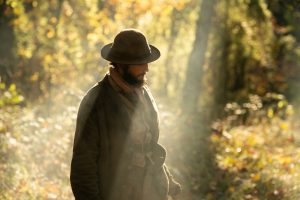
A still from FIRST COW
HtN: Right. I agree. Speaking further about the look of this film, your cinematographer, Christopher Blauvelt, has worked with you since Meek’s Cutoff. He has an interesting body of work. He also just shot Autumn de Wilde’s Emma., which is opening around the same time as First Cow. I was particularly impressed with your nighttime scenes, which appear to be photographed with very little light. I’m sure the truth is more complicated, but it’s really remarkable work. How did you two decide on the look of the film?
KR: Well, a sort of color guide was the paintings of Frederick Remington, who has a lot of night…One of his books that we were looking at and I was passing around to everyone in the crew, I think it’s actually called The Color of Night. And he has these really muddy blues with a lot of green in them and yellow and these sort of coral stars and fire. Some of the scenes are shot day for night and some are night for night. It took some doing just to answer the question, “Can you make day for night look beautiful and not look hokey?,” and I think Blauvelt did a really amazing job with that.
HtN: He really did. Some of those nighttime scenes, we can barely see detail and yet we can see what we need to see.
KR: (laughs) I mean, usually, the director is saying, “I want it darker,” and the DP [Director of Photography] says, “That’s dark enough,” but we both loved the darkness equally. (laughs) So, sometimes it’s a little dangerous because we don’t pull each other back at all from crossing the line into complete…we’re getting a little better, though.
HtN: (laughs) Well, I really appreciate how the film looks. I also really appreciate the cast. I had just finished watching season one of Tom Clancy’s Jack Ryan, on Amazon, in which John Magaro plays a significant supporting role. How did you pick him for the film? And then I didn’t really know Orion Lee at all before, but they’re both great.
KR: Yeah, I didn’t…I haven’t seen that series, but John Magaro was kind of in our orbit. He was in Carol, Todd Haynes’ film, and he had done a lot of plays with Scott Rudin and Eli Bush, who produced the movie. And in fact, Jon Raymond had worked on a commercial, years ago, where they cast John in this…I think it was a video game called Rock Band. I think that’s what it was called. So anyway, Magaro, I just thought he really was unexpected for a Western and just everything about him felt right to me. He looks like like someone in a Courbet painting. I was just really drawn to him.
And Orion Lee, it was a huge search for King Lu. I would like to say Orion was good luck, but in fact, he comes from the labors of our casting director, Gayle Keller. He did three or four readings over the course of a month or two and I just kept pulling his readings and leaving them on my desktop and I just kept going back to them. All of them were really different. In the beginning, we didn’t have a lot of mutual references to go to when I was first Skyping with him. He does a lot of theater and he loves big movies. What we were going for was not so on his radar, but every reading was just so interesting and had something coming through that just felt like, “Oh, there’s a person here, and this is an interesting person.” And so yeah, it was just such a good find. I keep feeling that it was very lucky, but I feel like it’s not fair to Gayle to say that it was luck.
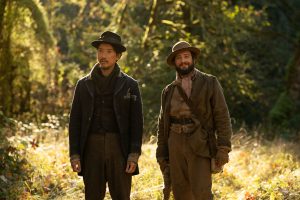
A still from FIRST COW
HtN: I also wanted to ask you about the score and the sound design. It’s a remarkably quiet film, but you do have a score. Can you talk about how you designed the soundscape?
KR: Yeah, it’s really challenging to make quiet films more so even than when we shot Meek’s Cutoff, where we were really out in the middle of nowhere, but it’s a lot of years since Meek’s Cutoff and we were shooting closer to Portland, where there was 8 to 11 seconds between airplanes, it turns out, so you can never get to a scene without an airplane. That was just something we had to give up on early on. The air traffic is insane. So you’re out in this forest, but it’s not quiet. And so for the soundscape, I should say the music’s from William Tyler, which was him and his beautiful dulcimer, and that was really wonderful. But I did the sound design with Leslie Shatz in New York. And then I really went down the rabbit hole with the crickets and the birds. When we were done, I just still felt like they were just somehow distracting to me.
So I went to Oregon and I did another…I can’t remember if it was a week or two…with a young sound designer out there who was all up for whatever. And we just did crickets and spent a week just doing crickets and birds, making sure the birds were from the region, and just really hand-placing every bird and cricket sound so that it wouldn’t be like a wall of crickets, which is funny because sometimes I go out now and I’m like, “Oh, it’s a wall of crickets,” but a cricket sound, just because it has a rhythm to it, it can be really distracting and it doesn’t always fade away. So anyway, it seems ridiculous now, but at the time, I don’t know, I was just obsessed with the crickets and the birds, getting them to feel just in the space. And so yeah, like everything, it’s a long process. I haven’t dealt with music in a while and it was really great to be able to just allow myself the beautiful sounds of William Tyler.
HtN: Well, it really is quite a lovely soundscape. So, thank you for talking to me and I wish you all good things with the film.
KR: Thank you so much!
– Christopher Llewellyn Reed (@ChrisReedFilm)








